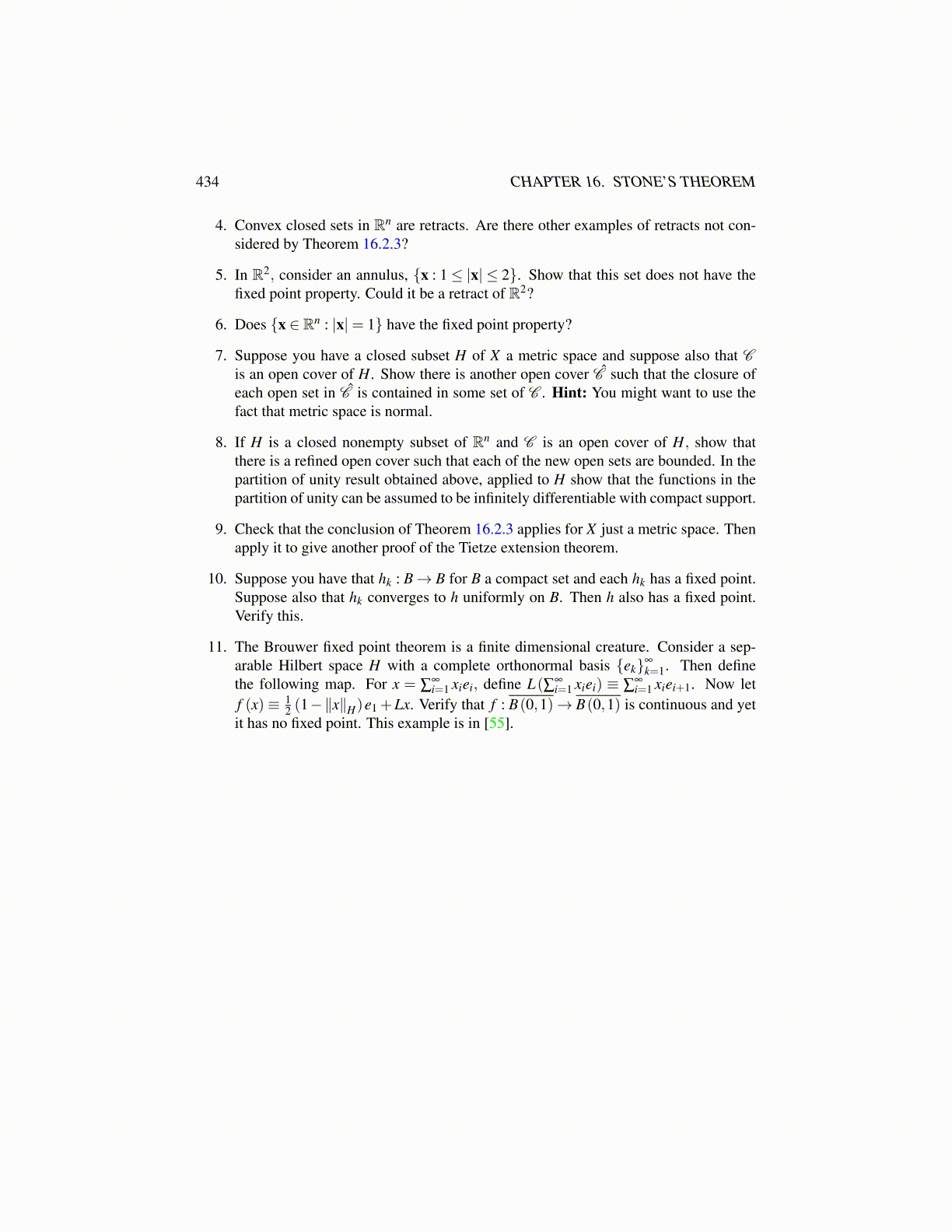
434 CHAPTER 16. STONE’S THEOREM
4. Convex closed sets in Rn are retracts. Are there other examples of retracts not con-sidered by Theorem 16.2.3?
5. In R2, consider an annulus, {x : 1≤ |x| ≤ 2}. Show that this set does not have thefixed point property. Could it be a retract of R2?
6. Does {x ∈ Rn : |x|= 1} have the fixed point property?
7. Suppose you have a closed subset H of X a metric space and suppose also that Cis an open cover of H. Show there is another open cover Ĉ such that the closure ofeach open set in Ĉ is contained in some set of C . Hint: You might want to use thefact that metric space is normal.
8. If H is a closed nonempty subset of Rn and C is an open cover of H, show thatthere is a refined open cover such that each of the new open sets are bounded. In thepartition of unity result obtained above, applied to H show that the functions in thepartition of unity can be assumed to be infinitely differentiable with compact support.
9. Check that the conclusion of Theorem 16.2.3 applies for X just a metric space. Thenapply it to give another proof of the Tietze extension theorem.
10. Suppose you have that hk : B→ B for B a compact set and each hk has a fixed point.Suppose also that hk converges to h uniformly on B. Then h also has a fixed point.Verify this.
11. The Brouwer fixed point theorem is a finite dimensional creature. Consider a sep-arable Hilbert space H with a complete orthonormal basis {ek}∞
k=1. Then definethe following map. For x = ∑
∞i=1 xiei, define L(∑∞
i=1 xiei) ≡ ∑∞i=1 xiei+1. Now let
f (x)≡ 12 (1−∥x∥H)e1 +Lx. Verify that f : B(0,1)→ B(0,1) is continuous and yet
it has no fixed point. This example is in [55].